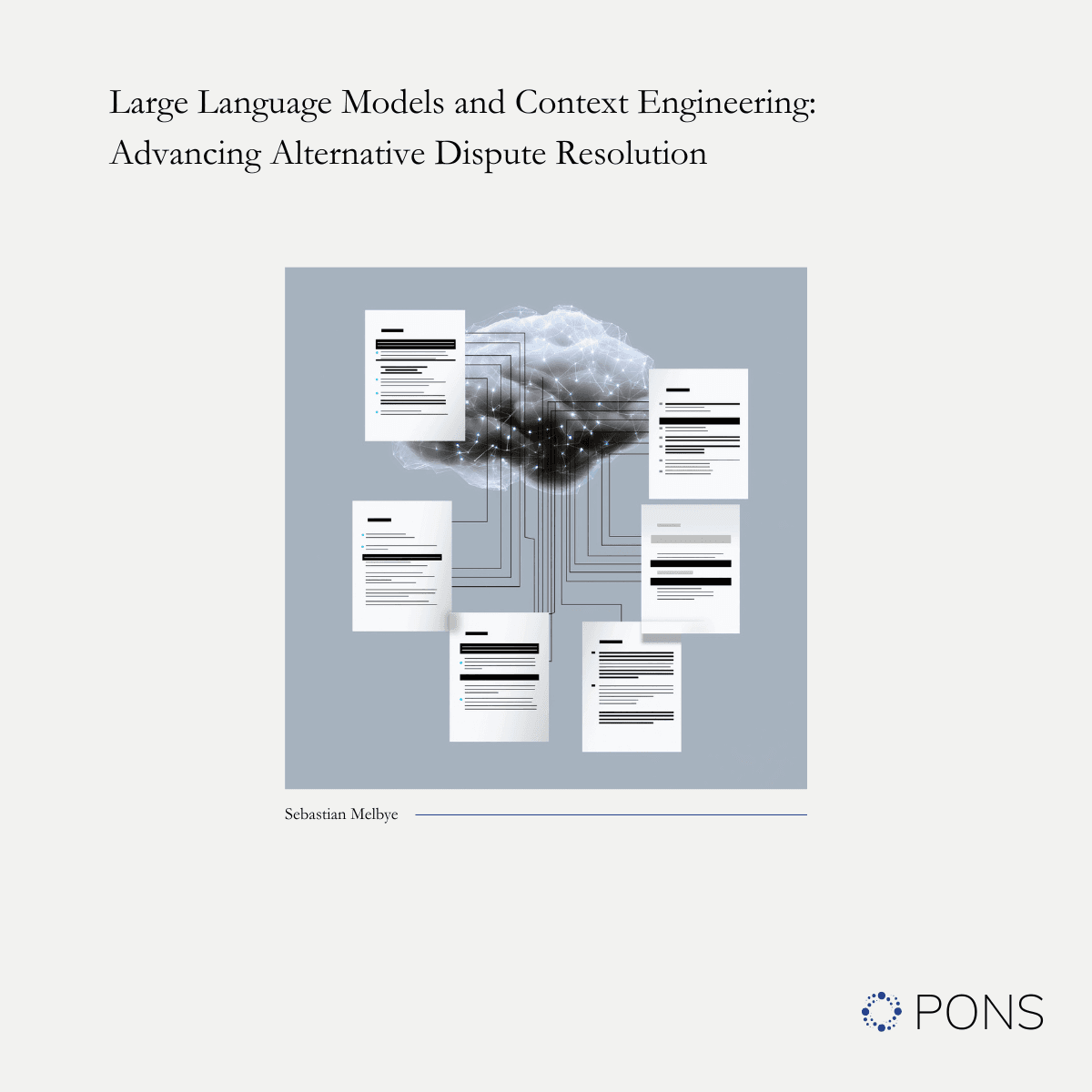Abstract and Introduction
Alternative dispute resolution (ADR) includes methods like mediation, arbitration, and negotiation, providing efficient alternatives to traditional court proceedings. As of July 2025, the rise of artificial intelligence - especially large language models (LLMs) and the practice of context engineering - is transforming these processes. LLMs enable automated analysis, outcome prediction, and interactive facilitation, while context engineering optimizes the data environment around them for better performance. This article draws on recent studies to explore these technologies' technical aspects, applications in ADR, benefits, challenges, and future potential.
Core Technologies: LLMs and Context Engineering
LLMs are advanced neural networks based on transformer architectures, trained on massive datasets to process and generate natural language with remarkable fluency. By 2025, these models handle extensive contexts - often over a million tokens - and incorporate diverse inputs like text, images, and legal documents. At their core, self-attention mechanisms allow LLMs to understand relationships between elements in a sequence, enabling capabilities such as adapting to new tasks on the fly without additional training.
In ADR, LLMs shine in areas like extracting key clauses from contracts or analyzing sentiment in negotiations, achieving success rates of 80-97% in litigation strategy predictions through fine-tuning on legal datasets. For those interested in implementation, the real excitement comes from agentic systems, where LLMs use step-by-step reasoning - such as chain-of-thought prompting - to break down disputes, identifying issues, generating proposals, and even simulating negotiations. Fine-tuning on domain-specific data, like thousands of arbitration transcripts and awards, has reduced error rates, like hallucinations, to manageable levels, making them dependable for sensitive applications despite initial rates as high as 58-82% in general legal queries. Legal users appreciate how this translates to predictive tools that assess settlement odds by reviewing past cases, aiding decisions in mediation or arbitration.
Building on LLMs, context engineering shifts the focus from simple prompts to creating robust systems that feed models the right information dynamically. It involves techniques like Retrieval-Augmented Generation (RAG), which pulls in external data - such as case law - from databases using vector embeddings for semantic retrieval, improving accuracy by integrating probabilistic context from autonomous searches. Other elements include memory layers for retaining conversation history - short-term for sessions and long-term for persistent knowledge - and tool integrations for tasks like real-time API calls to legal databases. Technically, this means working with vector-based retrieval, chunking methodologies to break down large datasets for efficiency, and workflow sequencing to manage complex interactions, addressing token limits and computational costs.
In practice, context engineering personalizes ADR by preserving details like party backgrounds or cultural factors, leading to outcomes that align closely - around 84% - with those from human mediators in tests. A quick comparison highlights the edge:
| Technique | Key Feature | Benefit in ADR | Performance Gain |
|---|---|---|---|
| RAG | Real-time data fetch via embeddings | Incorporates precedents | Enhanced precision in retrieval |
| Memory Systems | History retention | Tailored resolutions | Up to improved personalization |
| Workflow Orchestration | Task sequencing | Streamlined negotiations | High task completion rates |
This combination turns LLMs into adaptive tools, bridging raw computation with real-world utility through deterministic (user-controlled) and probabilistic (AI-explored) context layers.
Applications and Empirical Insights in Dispute Resolution
When integrated, LLMs and context engineering power AI agents that act as neutral facilitators in ADR. These systems analyze dispute records, rephrase contentious points, and suggest balanced solutions, often emulating empathy through natural language processing and sentiment analysis. In arbitration, they sift through evidence to forecast results with high precision, drawing on historical awards and advanced analytics like BERT for sentiment in crowd-based systems. Technologists might note multi-agent setups, where different LLMs handle subtasks like detecting biases or applying game theory for fair deals, leveraging fine-tuned models for domain-specific tasks.
For lawyers, this means online platforms that speed up virtual mediations, slashing costs by reducing manual reviews and timelines by 40-60% versus traditional approaches. Recent research, including 2025 experiments, shows AI achieving settlement rates on par with humans, with 80% satisfaction in commercial cases and proposals within 10% of actual settlements in tested disputes. In family disputes, for example, these tools have cut backlogs by automating initial assessments, using predictive analytics on historical data to inform outcomes. Hybrid models, blending AI with human input, ensure reliability, as seen in platforms that allow overrides for nuanced judgments.
Challenges, Ethical Considerations, and Future Directions
Despite their potential, LLMs face challenges like generating inaccurate outputs - hallucinations - necessitating explainable AI frameworks to ensure trust, with rates mitigated through grounding techniques and source citations. Ethical concerns, particularly biases in training data, are mitigated through diverse datasets and audits, as outlined in 2025 CIARB guidelines, which classify ADR AI as high-risk under the EU AI Act. Emerging regulations categorize AI tools by risk, advocating hybrid human-AI models to preserve emotional and contextual nuance in ADR.
Looking to 2030, decentralized AI systems, potentially integrated with blockchain for secure arbitration, promise further innovation. Context engineering will likely evolve toward adaptive, self-optimizing frameworks, with research emphasizing interdisciplinary efforts to enhance inclusivity for underserved communities.
Last words
The integration of LLMs and context engineering in ADR, grounded in robust empirical evidence, offers transformative potential. By automating complex tasks and personalizing resolutions, these technologies address pressing needs for efficiency and fairness in dispute management, paving the way for a more accessible legal future.
